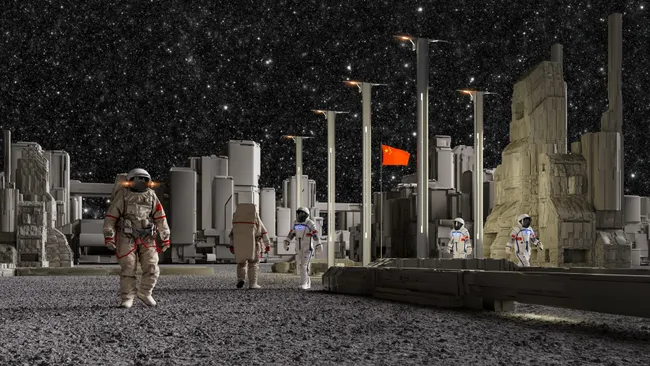"It is a statement endorsing China's moon plans if nothing else."
Two more nations just signed on to help China build its moon base.
Pakistan and Belarus have come aboard the International Lunar Research Station (ILRS), a China-led project that will be constructed in the 2030s, if all goes according to plan.
Belarus announced its involvement on Monday (Oct. 23), while Pakistan's became known late last week.
There are now seven nations in the ILRS coalition, according to SpaceNews: China, Russia, Belarus, Pakistan, Azerbaijan, Venezuela and South Africa.
The latter five countries aren't exactly space heavyweights, but technical contributions aren't the only criteria that China is interested in.
"Pakistan does not have its own launch capabilities — it depends on China for that — and Pakistan has only three active satellites on orbit, while China has over 800," Victoria Samson, Washington office director for the nonprofit Secure World Foundation, told SpaceNews in an email.
"So in terms of it contributing substantively to the ILRS, I'm not entirely certain it will have a lot of technical things to add," she added. "But there is something to be said for political support, and it is a statement endorsing China's moon plans if nothing else."
NASA is building a moon coalition of its own, via a set of agreements known as the Artemis Accords. The Accords lay out guidelines for responsible and peaceful lunar exploration, which the American space agency is undertaking via its Artemis program.
Twenty-nine nations have signed the Artemis Accords to date, including Australia, Brazil, Canada, France, Germany, India, Japan, South Korea and the United Kingdom.
One of the Artemis program's main goals is the construction of one or more bases near the moon's south pole, which is thought to be rich in water ice, by the end of the 2020s. The skills and lessons learned in doing so will help NASA get astronauts to Mars by the late 2030s or early 2040s, agency officials have said.
- Adenman
-

 1
1



Recommended Comments
There are no comments to display.
Join the conversation
You can post now and register later. If you have an account, sign in now to post with your account.
Note: Your post will require moderator approval before it will be visible.